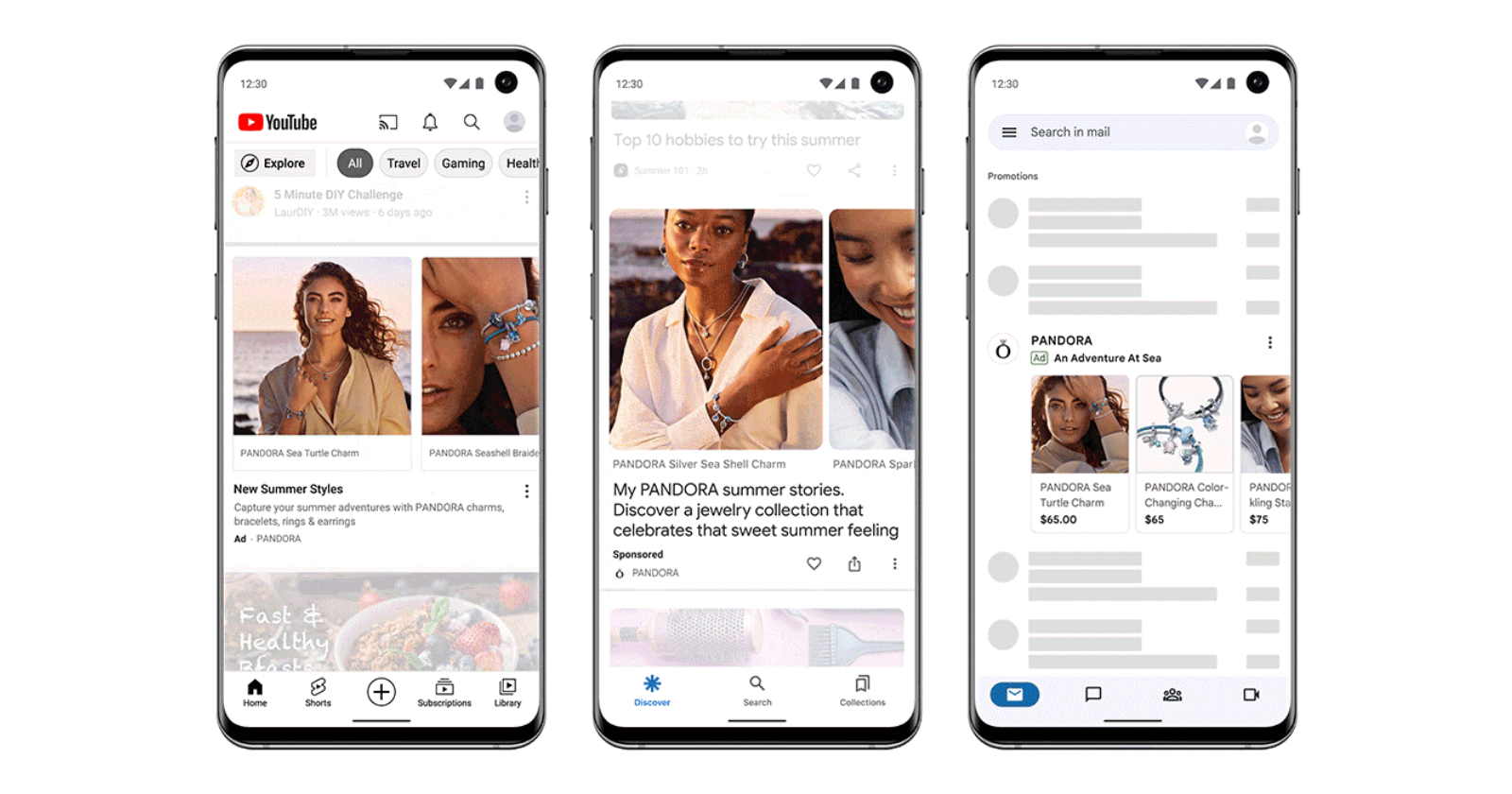
Google is rolling out updates to Discovery ads to help brands excel on the platform’s most engaging ad surfaces.
As consumers increasingly shop across multiple online touchpoints, over half use platforms like YouTube, Discover, and Gmail to research products or brands.
With 91% of consumers acting upon discovering something new, advertisers must engage audiences when they’re ready to make decisions.
Here’s how Google is making it easier to get products in front of customers on more surfaces.
Spark Audience Interest With Product Feeds
Google’s Discovery ads now offer product feeds to all advertisers, allowing them to showcase items based on consumers’ interests and intent.
Retailers can use lifestyle images and short text with their Google Merchant Center catalog to deliver more relevant ads.
By incorporating product feeds into Discovery ads, advertisers can achieve 45% more conversions at a similar CPA on average.
These ads can also be combined with Video action campaigns on YouTube to drive deeper consideration and engagement.
Case Study: Pandora’s Success With Product Feeds
Screenshot from: support.google.com, March 2023.
In Q3 2022, Pandora partnered with iProspect and utilized product feeds for Discovery ads to create tailored ad experiences.
As a result, the company saw a 94% increase in sales from prospecting customers and a 28% YoY growth in return on ad spend.
Olav van der Lans, Digital Performance Lead at Pandora NOEU, praised the use of product feeds for Discovery ads to improve ad relevance and customer interaction.
Turn Data Into Results With Better Reporting & Measurement
Google’s latest updates in reporting and measurement aim to help advertisers better understand their performance in Discovery and Video action campaigns.
Launching later this month, product-level reporting will allow advertisers to track how their Google Merchant Center catalog items perform in product feeds against metrics like impressions or clicks.
This will enable them to identify which product types generate more interest and take appropriate business actions.
Starting in Q2, data-driven attribution (DDA) will be available for Discovery advertisers, providing a more accurate view of campaign performance within the Google ecosystem.
DDA allocates conversion credit based on user engagement with ads, using account data to determine which campaigns have the most significant impact on business goals.
Pairing these insights with automated bidding strategies like Max Conversions can lead to even more conversions.
In Summary
Google’s latest improvements to Discovery ads offer digital marketers more opportunities to engage audiences and drive customer demand across platforms like Google and YouTube.
By utilizing product feeds, better reporting, and measurement features, brands can create personalized ad experiences and achieve higher conversion rates.
Featured Image: Screenshot from: support.google.com, March 2023.
Source: Google






